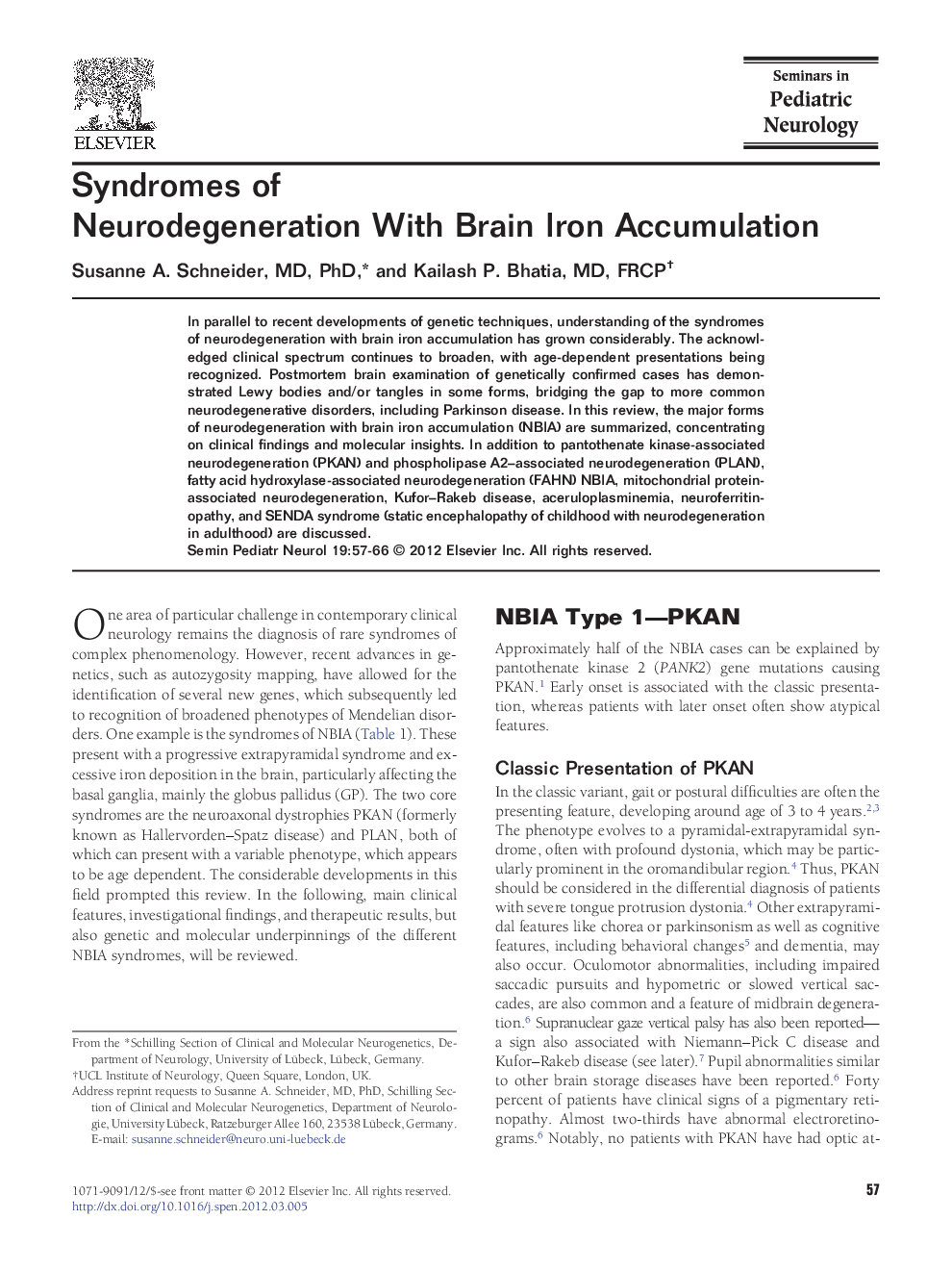| Article ID | Journal | Published Year | Pages | File Type |
|---|---|---|---|---|
| 3090986 | Seminars in Pediatric Neurology | 2012 | 10 Pages |
In parallel to recent developments of genetic techniques, understanding of the syndromes of neurodegeneration with brain iron accumulation has grown considerably. The acknowledged clinical spectrum continues to broaden, with age-dependent presentations being recognized. Postmortem brain examination of genetically confirmed cases has demonstrated Lewy bodies and/or tangles in some forms, bridging the gap to more common neurodegenerative disorders, including Parkinson disease. In this review, the major forms of neurodegeneration with brain iron accumulation (NBIA) are summarized, concentrating on clinical findings and molecular insights. In addition to pantothenate kinase-associated neurodegeneration (PKAN) and phospholipase A2–associated neurodegeneration (PLAN), fatty acid hydroxylase-associated neurodegeneration (FAHN) NBIA, mitochondrial protein-associated neurodegeneration, Kufor–Rakeb disease, aceruloplasminemia, neuroferritinopathy, and SENDA syndrome (static encephalopathy of childhood with neurodegeneration in adulthood) are discussed.
